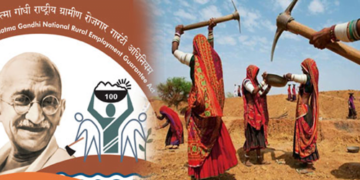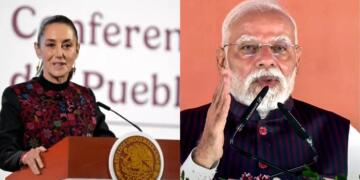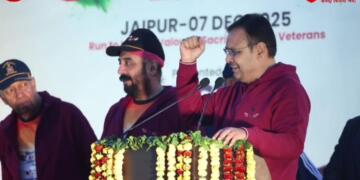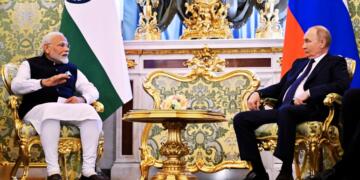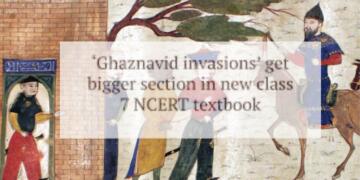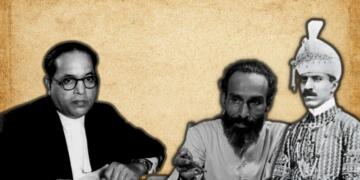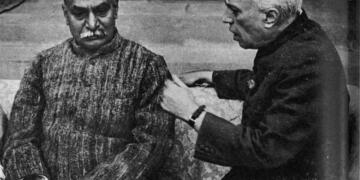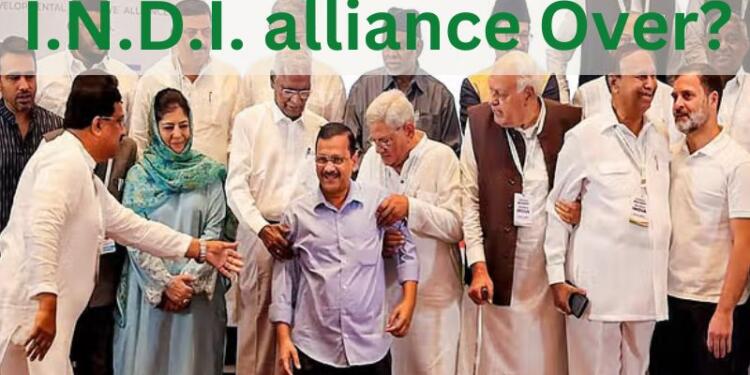Landslide victory by Bharatiya Janata Party (BJP) in Delhi is not a good sign for the future of Indian National Developmental Inclusive (I.N.D.I.) Alliance. It became a flat loser in the contest between INDI Alliance and National Democratic Alliance (NDA).
But ultimately, it all came down to a direct fight between BJP and Aam Aadmi Party (AAP). Against AAP’s tally of 22, BJP secured 48 seats. However, despite BJP securing more than 115 percent of AAP’s seats, its vote share is just 1.99 per cent more than AAP.
AAP’s damage came from none other than its coalition partner Congress. Congress was in ‘sabotage AAP’ mode and decided to contest all 70 assembly seats – four more than its 2020 figure of 66 seats. The increase in four seats came with a corresponding hike of 2.08 per cent in the vote share.
If we go by sheer numbers, AAP lost more than a dozen seats due to Congress: New Delhi, Jangpura, Greater Kailash, Malviya Nagar, Madipur, Rajinder Nagar, Sangam Vihar, Badli, Chhatarpur, Mehrauli, Nangloi Jat, Timarpur, and Trilokpuri.
Congress tanked high-profile leaders Arvind Kejriwal (New Delhi), Manish Sisodia (Jangpura), Saurabh Bharadwaj (Greater Kailash), Somnath Bharti (Malviya Nagar), and Rakhi Birla (Madipur), among others.
Also Read: The Big Takeaways From State Assembly Elections Post Lok Sabha 2024
These leaders losing due to Congress is significant for multiple reasons. Apparently, their loss is the loss of AAP’s original political plank of being an avid contributor to the modernisation of India. Secondly, Congress went on a rampage to highlight the failure of Arvind Kejriwal’s claim of heightened civic infrastructure. Rahul Gandhi himself took charge on this front.
Apparently, Congress contested in Delhi just to avenge the damage done to it by AAP in Gujarat, Goa, and Haryana. Simultaneously, it is also true that the formation of AAP owes its origin to opposing Congress, which Kejriwal later compromised for narrow political gains. A decade later, Congress persons who switched sides now regret villainising Sheila Dikshit to support Kejriwal.
Beyond the fight between AAP and Congress, it’s the internal contradiction of I.N.D.I. alliance which now is out in the open. The alliance, which is composed of more than two dozen small and large political factions, has an inbuilt destruction mechanism – virtually by design itself.
Take its West Bengal faction, for example. Mamata Banerjee’s Trinamool Congress (TMC) and left parties do not see eye to eye. After the reckless murder of BJP workers during elections, it is the brutality with which TMC and the left faction try to suppress each other that grabs headlines. Even during the Lok Sabha election, TMC decided not to engage in a seat-sharing arrangement.
Before Delhi, AAP and Congress fought against each other in the Punjab faction of the Lok Sabha elections as well.
These are just a few notable examples that have come out in the public domain.
Sources in the alliance say that constant bickering over issues, ranging from the WAQF bill to seat distribution, is the norm in the alliance. And why should it not be? Two dozen parties sometimes have different and sometimes the same sets of voter bases – both in the same and different states too.
For instance, the Muslim vote is something to which the Samajwadi Party, Rashtriya Janata Dal, TMC, Congress, and many others lay claim. The same holds true for Dalits and other backward classes votes too.
If it is the same voter base, then it is about the fight to claim it, while if the voter bases are different, then the fight is on ideological lines because, in post-colonial India, ideologies tend to divide people rather than settle differences through debates and discussions. Either way, verbal violence has to be a natural corollary of every difference in the alliance.
They may want to repackage it as democracy in action, but for people, it would be easier to believe that self-claiming secular parties want Muslims to prosper rather than the narrative that functioning of I.N.D.I. Alliance is democratic.
But one good thing (for Congress) I.N.D.I. Alliance did was help it claw back towards relevance in national political discussion. Congress secured 99 seats, and Supriya Shrinate was seen flaunting the two-figure tally in a viral video. This was the moment Rahul Gandhi’s ecosystem was waiting for.
Suddenly, it seemed viable to fulfil the two-decade-old dream of seeing Yuvraj becoming more confident and assertive. BJP faced mocking from this section for doing its job of pointing out Rahul’s fault lines and sheer lack of ground-level political knowledge. Suddenly, Rahul Gandhi could feel confident in giving a statement like preparing jalebi in a factory – all because of the 99 seats it got.
But more than these gaffes, it was about Congress tasting the blood of victory. Without doing much analysis of the cause of victory, the party suddenly started to take the feudal route in its dealings with other members of the alliance. Its fights regarding seat sharing and leadership arrangements now have an undercurrent of treating regional partners as a replaceable cog in the wheel.
The differences have manifested themselves in two ways – breaking of alliances and friendly contests even when both parties were in alliance.
In Haryana, Congress and AAP did not contest together. While Congress went ahead with the Communist Party of India (Marxist), AAP went solo on 88 seats, effectively damaging Congress as much as it could.
In Maharashtra, Congress changed its alliance flag name to Maha Vikas Aghadi (MVA) and contested with Shiv Sena (Uddhav Balasaheb Thackeray), Nationalist Congress Party (Sharadchandra Pawar), Samajwadi Party, Peasants and Workers Party of India, Communist Party of India (Marxist), and Communist Party of India.
Despite seat-sharing arrangements being final, these alliance partners were contesting against each other on 12 seats. SP decided to contest seven seats in its own capacity.
In Jharkhand, a relatively low-intensity state, Jharkhand Mukti Morcha, Rashtriya Janata Dal, Communist Party of India (Marxist–Leninist) Liberation, and Congress fought together under the banner named Mahagathbandhan. Here also, they collided on three seats.
These scuffles are consequences of Congress’s desperation to gain its old stature back. The party can do that by harking back to its strategy of getting Muslim and Dalit votes. The trajectory of politics played around both these communities is such that the party needs to bend its ideology towards extremes of ideologies.
Muslim votes have so many regional takers that Congress possibly promising the destruction of Ram Mandir does not seem an off-the-radar idea. For a possible mine test, it did try to push the idea of banning Bajrang Dal in Karnataka (in 2023, though).
The kind of threat and distrust which secular intellectuals have sown in the average Muslim mind against BJP can only be offset by far-left decisions.
As far as Dalit votes are concerned, the party needs to seek as much reservation for them as it possibly can. That too will have to be mixed with the announcements of more and more welfare schemes being designed for SC/ST.
All of these are radical in nature, and Congress is in direct contest with its regional allies regarding it. This possible contest is the reason why parties like Azad Samaj Party (ASP), Bahujan Samaj Party (BSP), and All India Majlis-E-Ittehadul Muslimeen (AIMIM) are virtually out of the question when it comes to joining hands with Congress.
All these parties are focused on the politics of Dalit and Muslim appeasement. To add to its complexities, traditionally OBC parties like RJD and SP are also taking the same path. In Uttar Pradesh, the party wished for more seats in bypolls, but the SP did not agree to the desired number.
The same tussle is currently unfolding in Bihar too. The party wants to increase its seat share, and in the worst-case scenario, it can contend with 70 seats. The reason behind such haughtiness is that Congress’ traditional vote banks – Dalits and Muslims – are about to be floated for open bidding.
During the 90s’ infamous rule, RJD took away both Dalits and Muslims from Congress. Later, when RJD rule ended, Dalits went into Nitish Kumar’s kitty, while Muslims kept changing their allegiance to RJD, Congress, Kumar (when he is not with BJP), and even AIMIM.
Kumar is towards the dawn of his career, and the vacant position will lead to more Dalit and Muslim votes being up for grabs.
With Muslims, Congress senses an opportunity in their disenchantment with Lalu Yadav and their search for a different political home. Prashant Kishor does offer an avenue, but for them, Gandhi and Congress will be more historically correct faces than Kishor since his name is attached to turning a chaiwala into a PM.
The fight between Tejashwi and Gandhi is already on. The same is expected to be repeated in the 2026 West Bengal Assembly elections and the 2027 Uttar Pradesh Assembly elections as well.
By all indications, I.N.D.I. alliance will need a new CPR in the form of Lok Sabha elections. If there is one common enemy, then this is the only uniting factor. Unfortunately for them, in a federal republic like India, that opportunity is only short lived.





